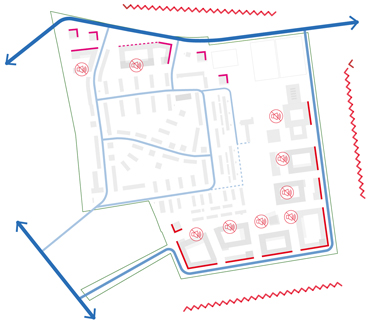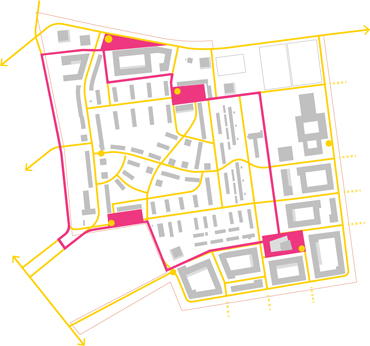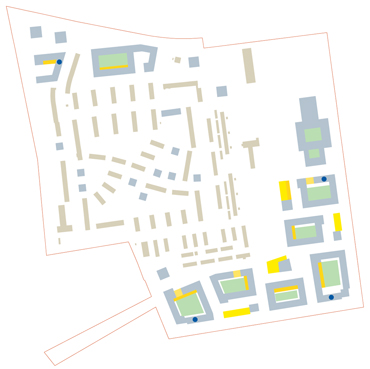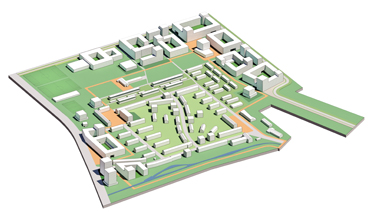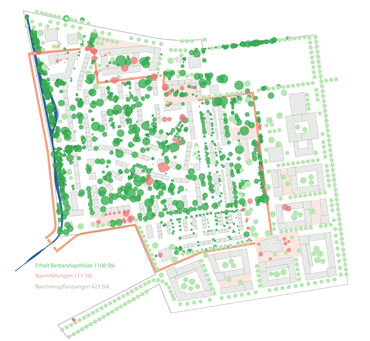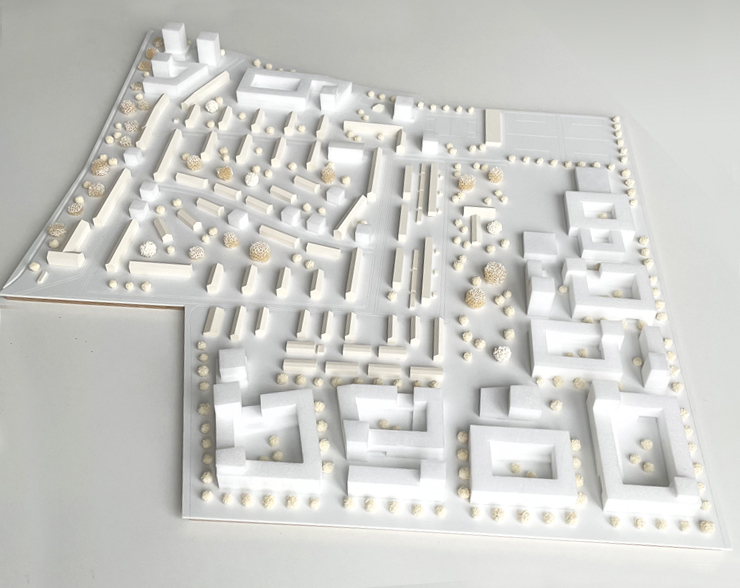morePlatz
architecture / urbanism / art / office / publications / contact deutsch
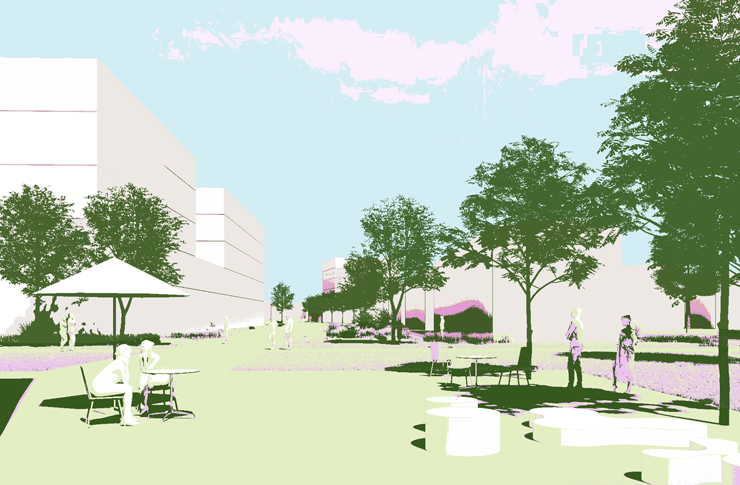
|
Our design is based on three key questions: How can a significantly higher density and new, urban forms of housing and building types be designed in harmony with the existing buildings? How can the existing and new open spaces be connected, networked with the landscape and at the same time noise protected? |
A ring park for Ludwigsfeld The new ring park in Ludwigsfeld wraps around the existing settlement like a green passe-partout. As a continuous, diversely designed open space, it offers many possibilities for local recreation. It runs through the entire area and concentrates a large part of the open spaces in itself, connects the existing with the new neighborhood and offers a high identity for the new quarter. |
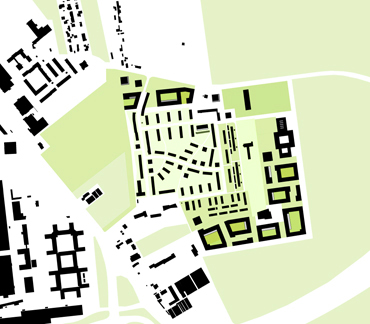 |
|
|
A dense network of paths Existing path connections of the Edelsteinsiedlung will be taken up and continued via the ring park to the edge of the quarter. This dense network of paths connects the settlement inside and outside and offers a sensible structure for the new building blocks on the southern, eastern and northern edges. The public facilities are attached to these paths, as well as the new local supply, in order to be easily reachable for today's residents.
|
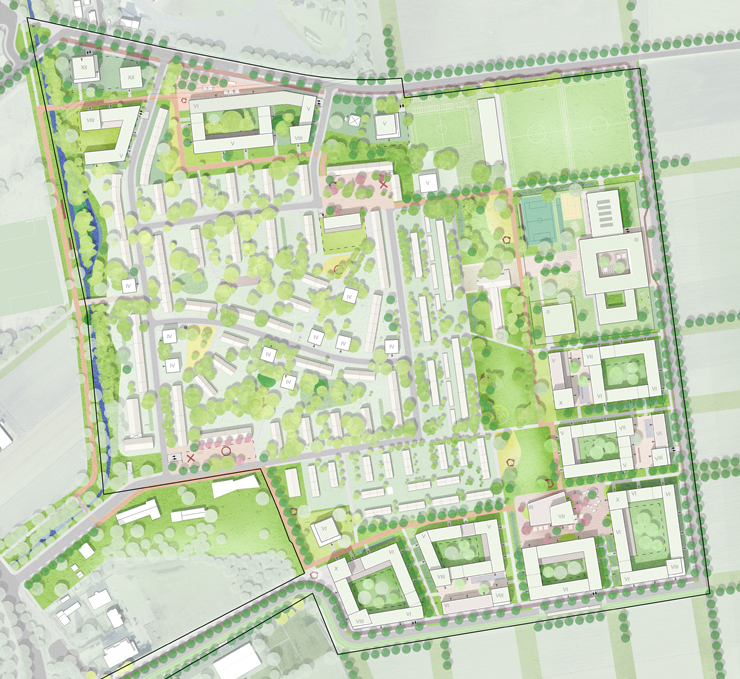
A strong edge for the district Most of the new buildings are oriented to the outer edges of the property. In this way, the green ring park can create a central open space that connects the old and new neighborhoods. In the north, east and south, the noise input should be minimized. For this reason, the urban planning foresees closed edges.
|
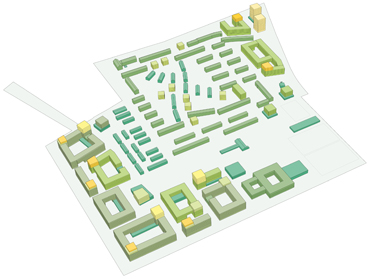 |
|
|
Green gaps between the buildings connect the ring park with the surrounding landscape and future quarters. The green courtyards form a functional and ecological stepping stone. Openings allow the courtyards to be ventilated in a north-south and east-west direction and also connect the courtyards with each other via the intimate neighborhood plazas. The sequence of large courtyards alternating with slabs allows for a clear assignment and generosity of semi-private open spaces, which are alternately designed as urban neighborhood plazas and green courtyards. A large part of the new private open spaces will be created in front of the apartments in the form of spacious loggias, balconies or terraces or on the roofs (in combination with PV). The building is mostly six storeys high. Individual height accents loosen up the development. The quarter entrances are emphasized by high points. |

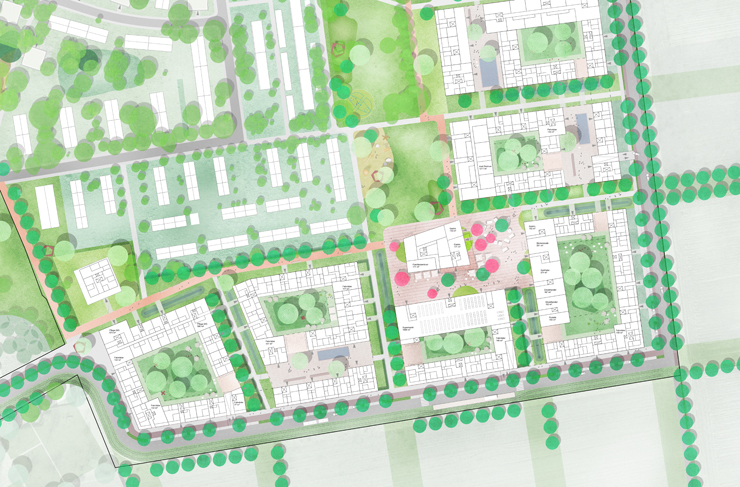
|
|
The "Diamond" sits in the center of the quarter, at the intersection between the central town square and the park. It is the only building that breaks out of the strict logic of the building blocks and thus unfolds a centralizing effect for the entire quarter. Active uses of the ground floor are sensibly concentrated in the area between the diamond and the two tram stops. The articulated structure of the school also takes up the principle of roadside development. The open school areas are sensibly attached to the ring park, while the gym is oriented towards the sports areas. The day-care center forms the southern end of the campus and can be reached quickly by the inhabitants. |
The north-western end of the quarter is formed by two building blocks with integrated garages and two towers placed in the open space, which refer to the gentle densification of the Edelsteinsiedlung. The existing settlement is being carefully compacted. For this purpose, small new solitair buildings with a maximum of five floors will be installed in the large gaps between existing buildings and existing streets and intersections. The onyx square will be redesigned and a new square will be created. The quality of stay in the settlement will be significantly improved by introducing the new neighborhood garages in the north. Additional parking spaces and a mobility hub for current and new residents are planned at the northern entrance to the quarter. |
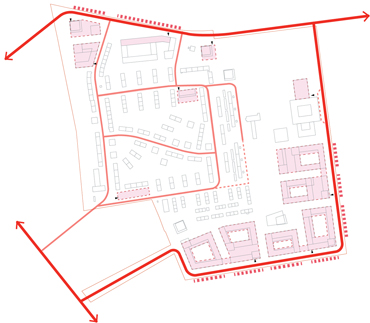 |
|
|
The location of the new quarter on the regional green belt around Munich is taken as an opportunity to further develop the extensive greenery of the existing settlement and to establish a green ring park as a connecting element in the quarter. The green ring park connects the most important open space types within the quarter. It functions as a local recreation area and an important networking opportunity for local residents. A combined bike and footpath, which is also a fitness trail, runs through the entire park and thus connects the different areas of the new quarter. Important public or publicly accessible facilities, such as daycare centers, schools, neighborhood centers, local suppliers, the mobility hub and sports fields have their address at or in the Ringpark. |
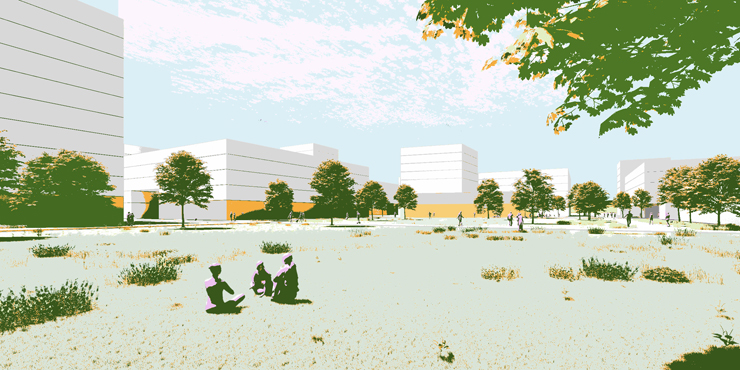
|
|
The ring park offers a sequence of open spaces with a high recreational function and is connected to the adjacent landscape by green joints. The large green residential courtyards complement the ring park. They function as neighborhood meeting places and, apart from the building development, are as green as possible. Integrated playgrounds and community beds create an intimate garden character. The neighborhood plazas have an urban character and invite you to linger at their water bassins.
|
|
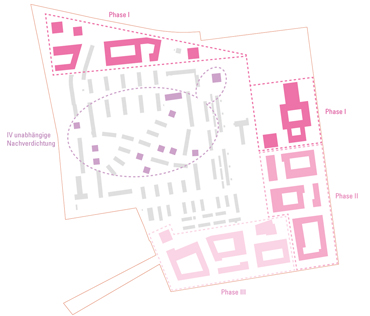 |
